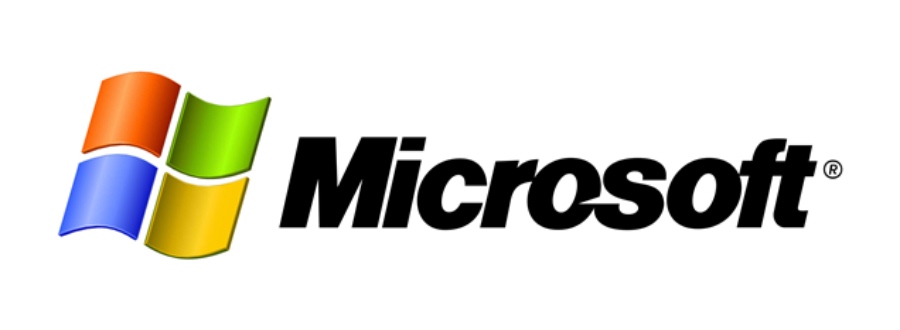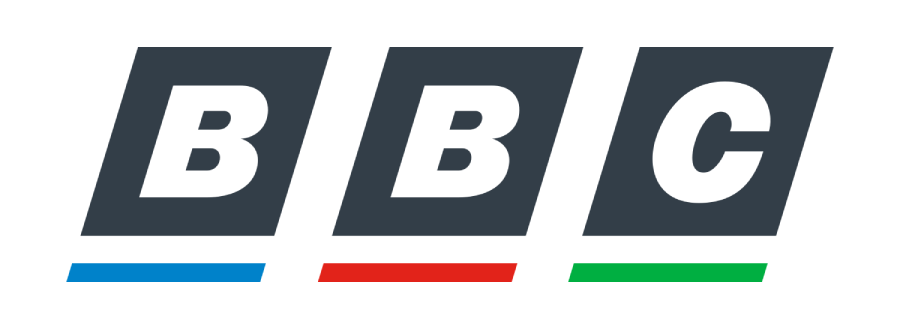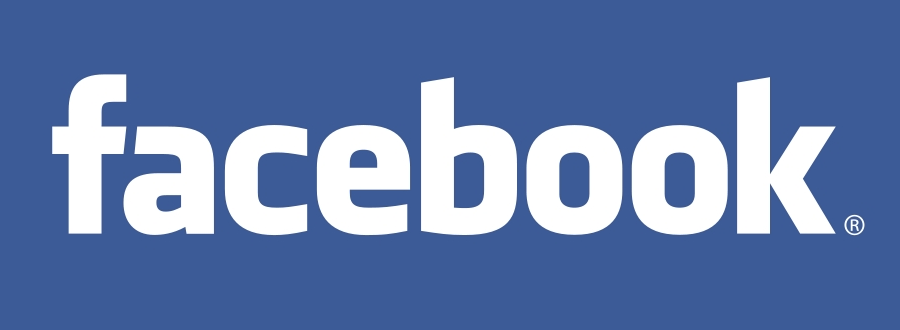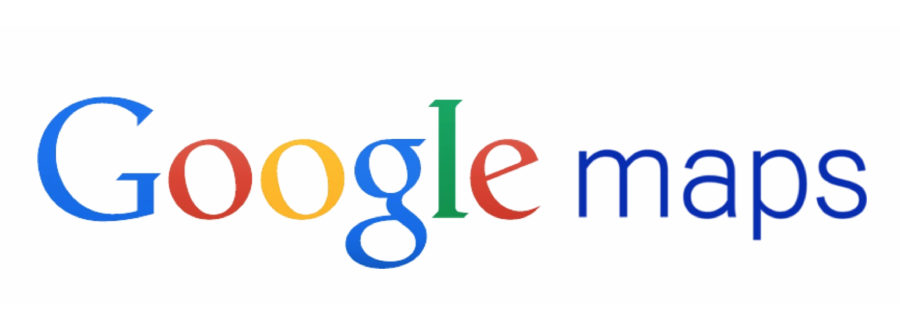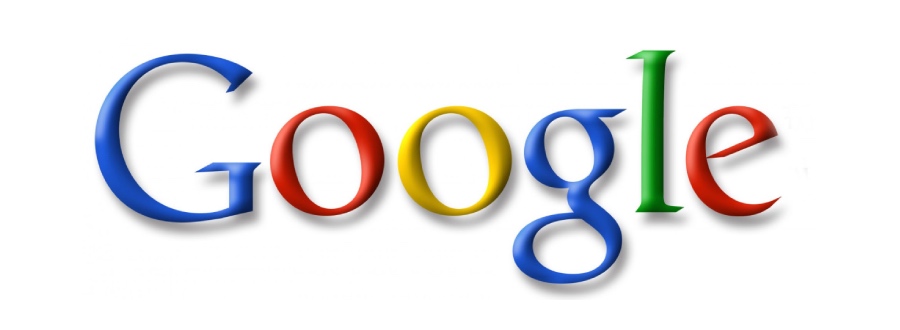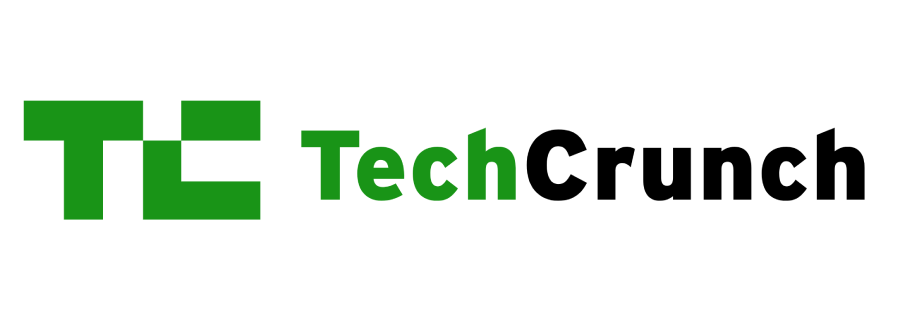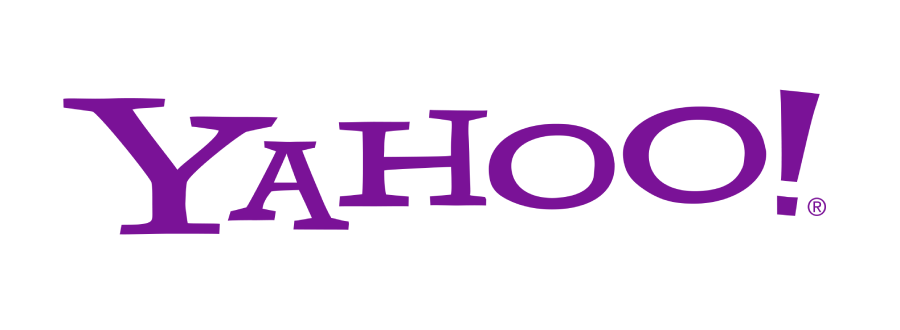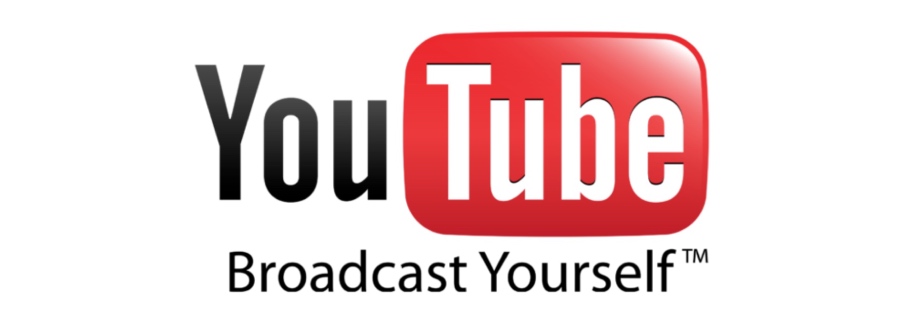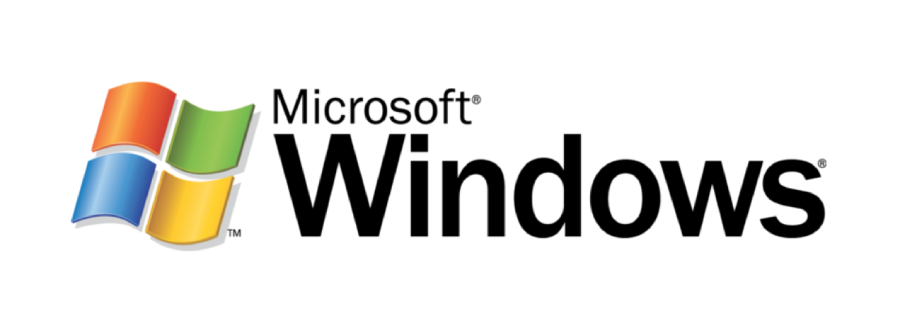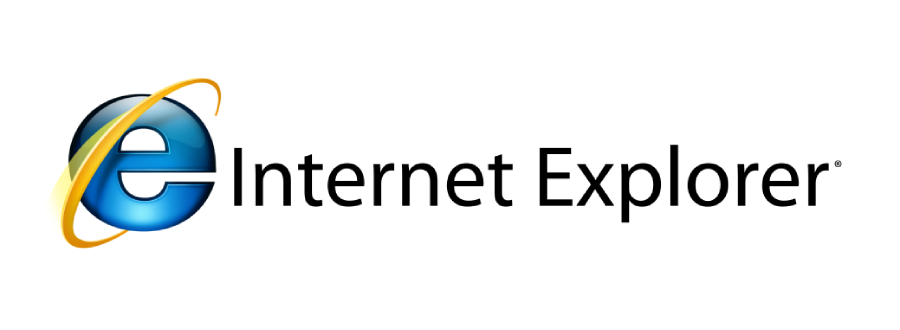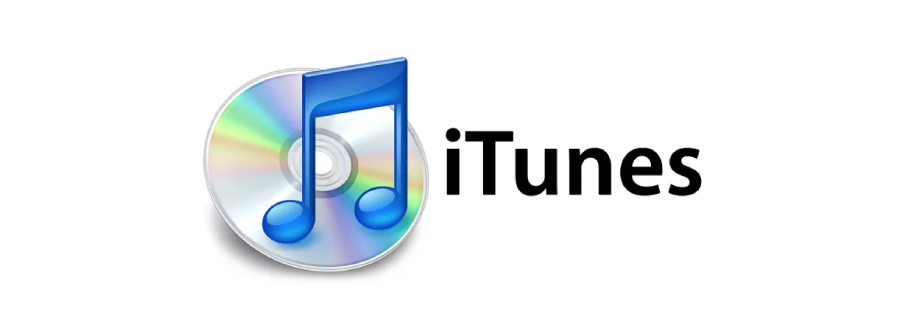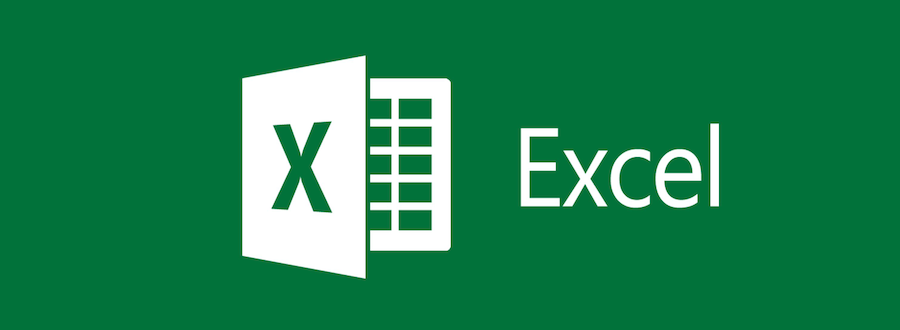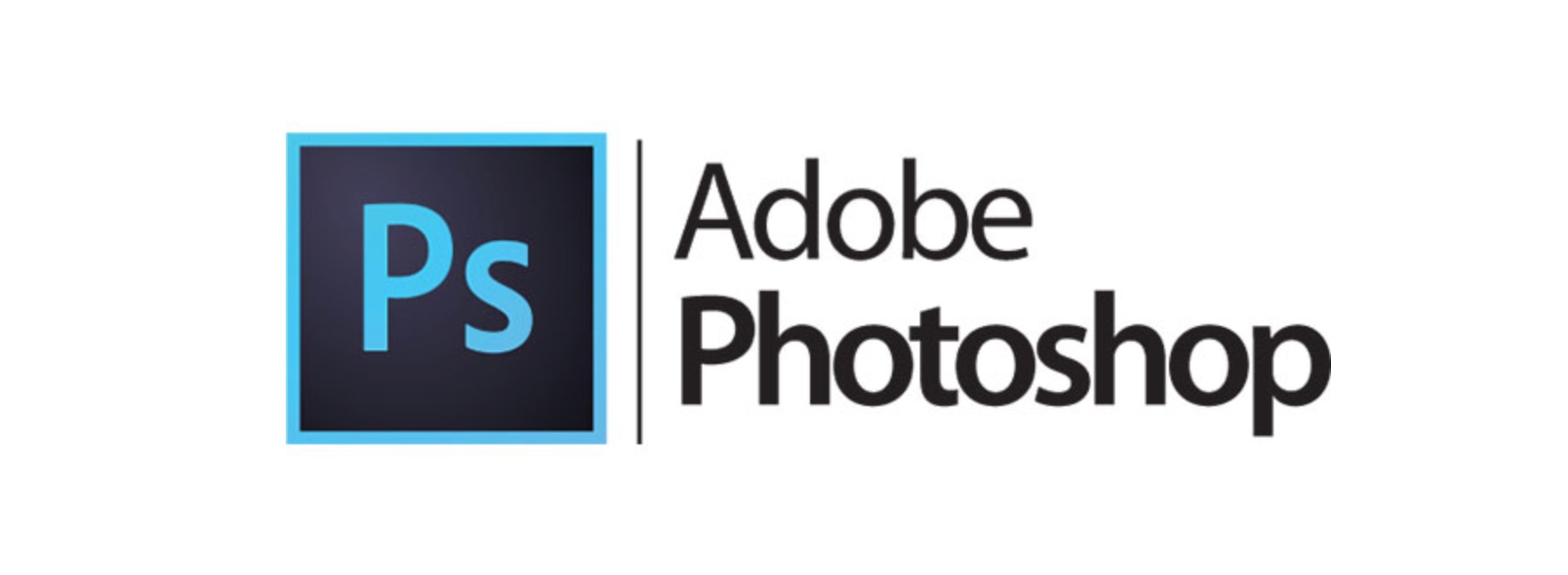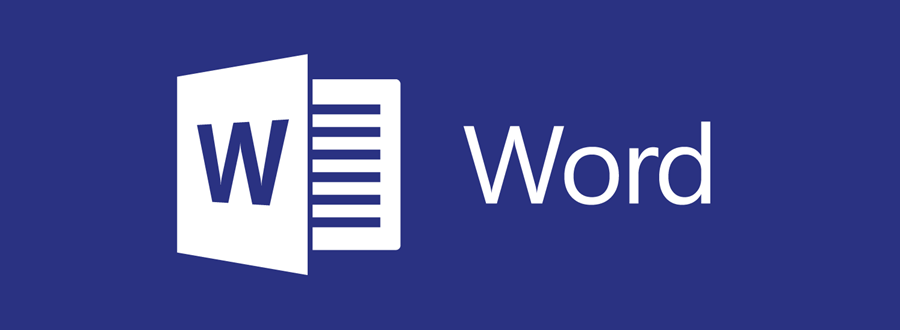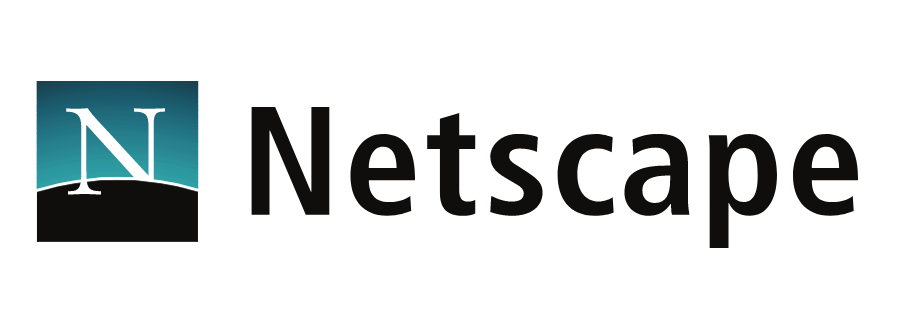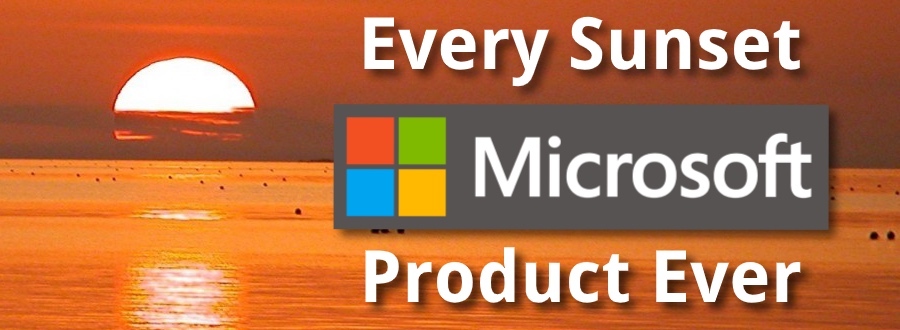Check out our YouTube video showing the design evolution of the Microsoft.com website! It has all the images and captions from this page, and is easy on the eyes.
Microsoft's journey on the web is long and storied. The Redmond, Washington-based software juggernaut was a very early internet adopter, with a web presence as early as 1994. Company founder Bill Gates realized the importance of the internet and the profound shift it could represent in personal computing. This is long before most people even knew the internet existed. Microsoft's historical website design changed numerous times over the years. In fact, the enterprise software giant morphed its homepage web design far more than its peers over the same period.
Microsoft's early web presence (1994)
Microsoft's design history over the years was varied, but started off with this imagemap-based homepage with links to various products and services. The gray background was a familiar sight in the time period since it was the default web page background color for early browsers.
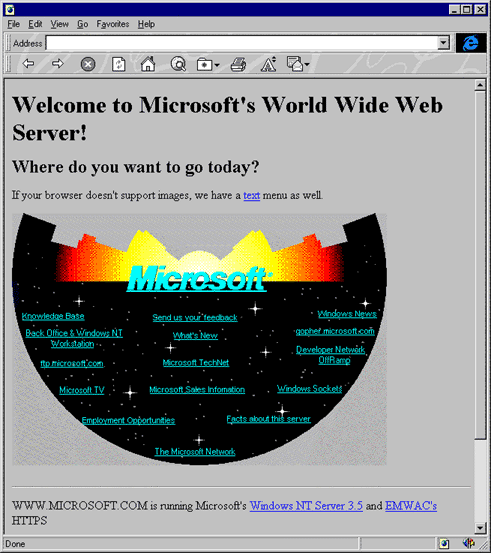
Microsoft homepage (1994)
Source: royal.pingdom.com
"Internet Tidal Wave" (1995-1997)
In 1995, Bill Gates penned a seminal internal company memo declaring the internet to be the future of Microsoft. Titled
"The Internet Tidal Wave,"
the note states
"the Internet is the most important single development to come along since the IBM PC was introduced in 1981.
It is even more important than the arrival of the graphical user interface (GUI)."
As the company learned to use the internet to provide information and services to its users, the more sophisticated and useful
Microsoft.com became. Windows 95 launched that year with a splash and useful content made its way to the website. In 1997,
the company started publishing its stock price on the homepage.
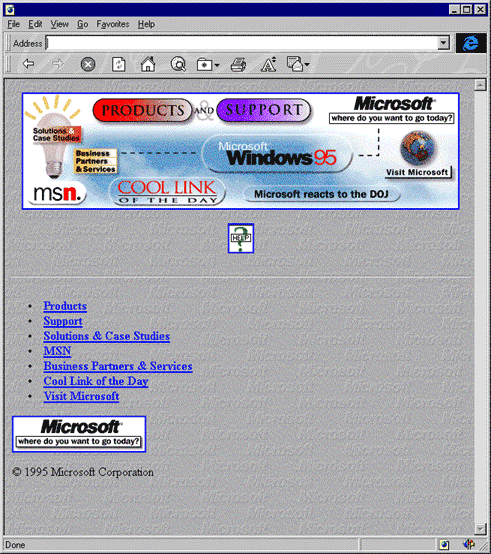
Microsoft homepage (1995)
Source: royal.pingdom.com
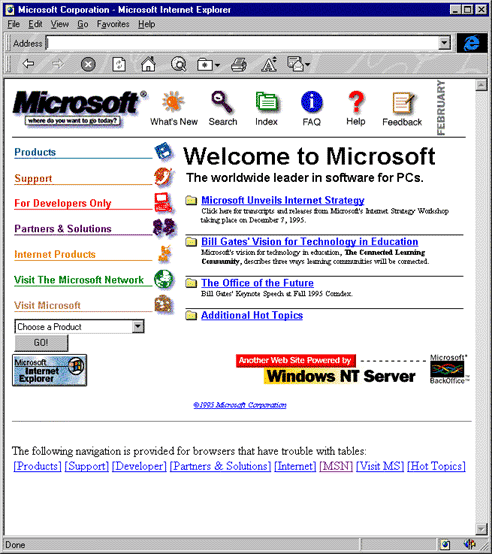
Microsoft homepage (1995)
Source: royal.pingdom.com
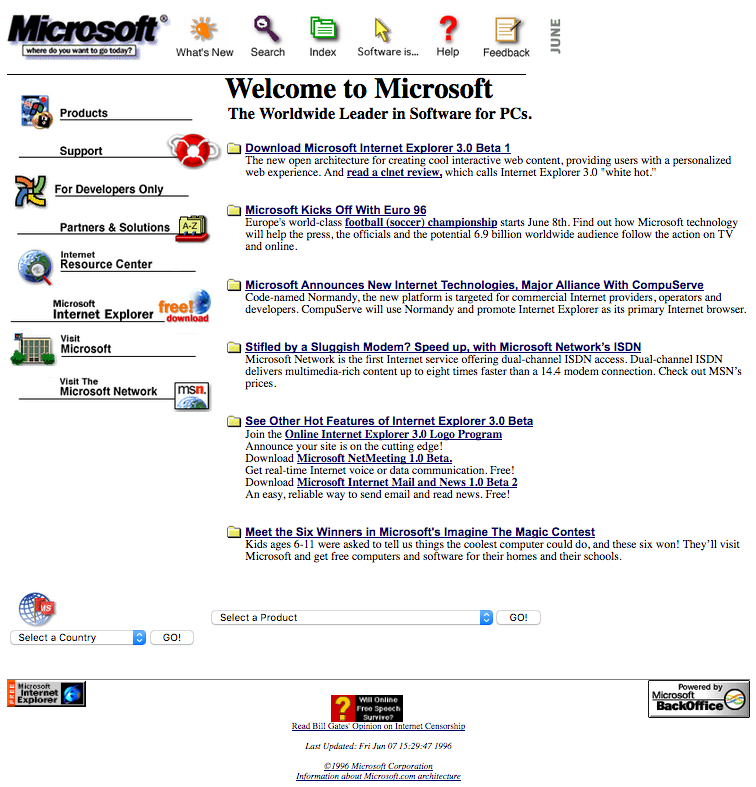
Microsoft homepage (1996)
Source: arquivo.pt
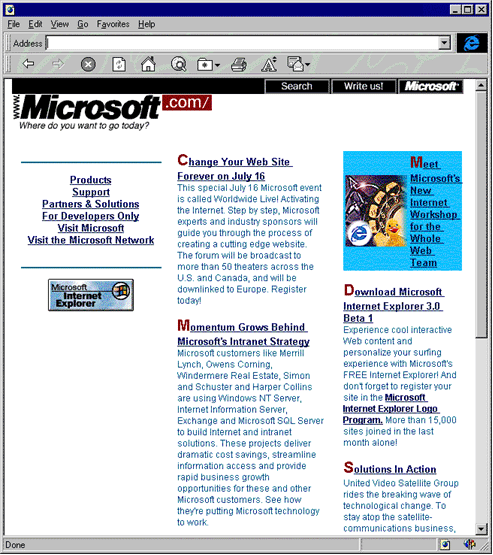
Microsoft homepage (1996)
Source: royal.pingdom.com
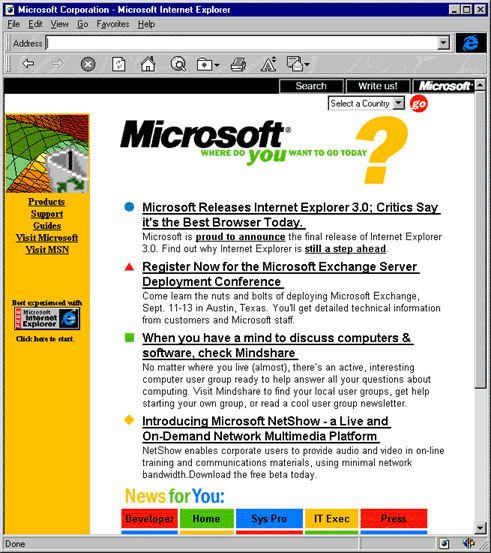
Microsoft homepage (1996)
Source: royal.pingdom.com
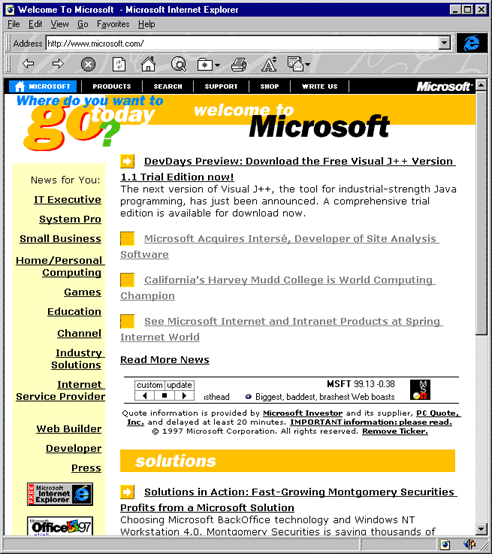
Microsoft homepage (1997)
Source: royal.pingdom.com
Microsoft vs Department of Justice (1998)
Microsoft solidified its web presence with ever-increasing amounts of content about all the software it sold.
More interesting at the time was the fact that the US Department of Justice sued Microsoft,
accusing it of using monopoly powers to impede healthy competition in the software industry. Microsoft and founder Bill Gates defended
themselves vigorously, both in real court and in the court of public opinion. Microsoft's website contained front page links
to news about the trial and even provided information on how to support the company against the government.
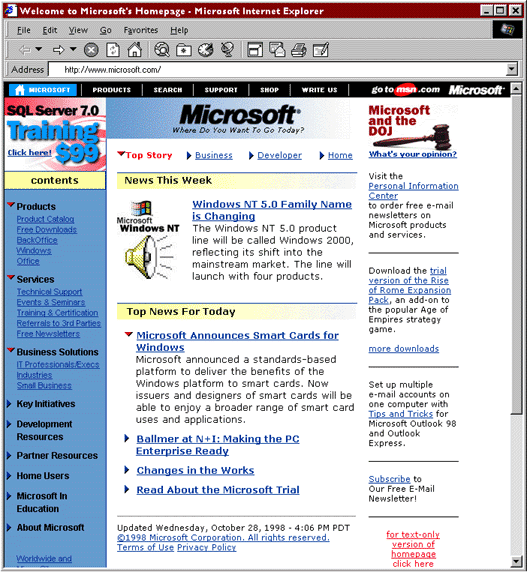
Microsoft homepage (1998)
Source: royal.pingdom.com
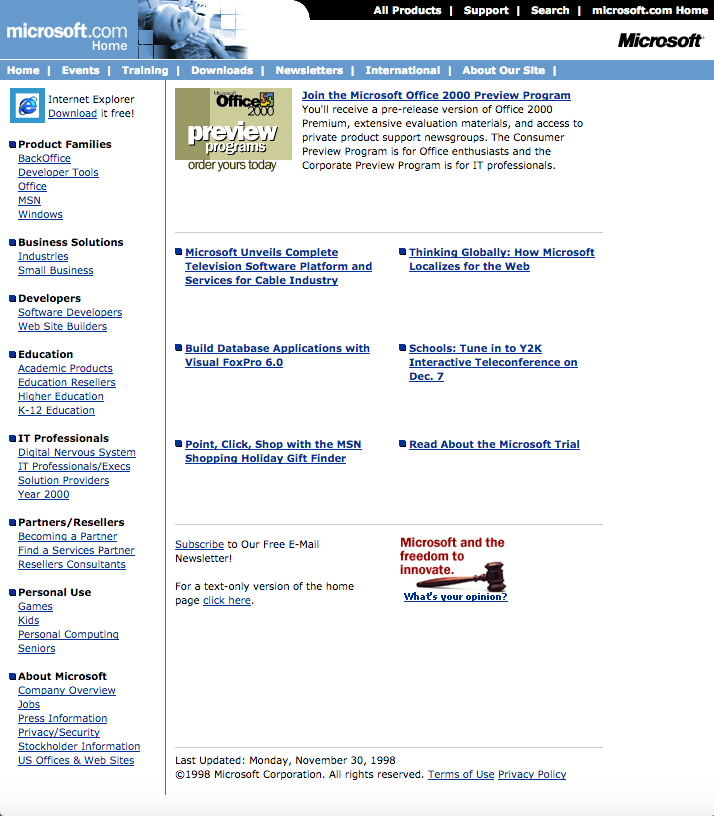
Microsoft homepage (1998)
Source: web.archive.org
Freedom to Innovate Network (1999)
Microsoft used a variety of communication platforms, both online and offline, to defend itself against the US government's lawsuit. Hanging in the balance was Microsoft's future as a single corporate entity. The Freedom to Innovate Network was a lobbying campaign to cultivate grassroots voices against the lawsuit.
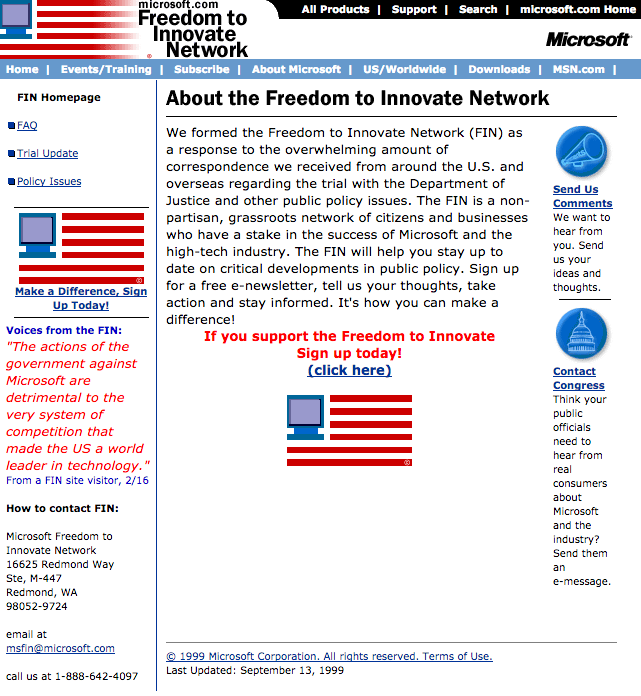
Freedom To Innovate Homepage (1999)
Source: web.archive.org
Internet Explorer 5 Download Page (1999)
The IE 5 browser launched in 1999. It would be considered crazy today, but ordering a CD with the browser software was a popular option at the time due to slow connection speeds that caused downloads to take a really long time. Dialup internet over phone lines was still common then.
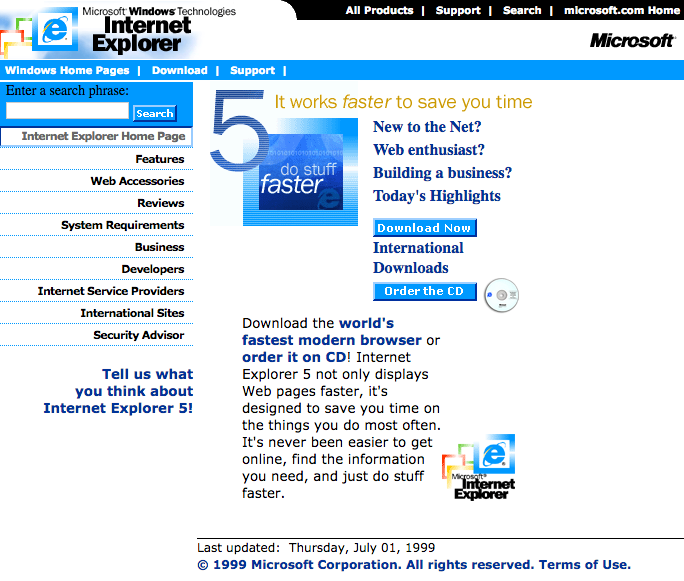
Internet Explorer 5 Download Center (1999)
Source: web.archive.org
Love Letter Virus and Breakup Defense (2000)
The homepage reflected high priority efforts for the company. Continuing its struggle against the
Department of Justice, it urged the dismissal of the government breakup of Microsoft, front and center above the fold.
In what would be an ongoing theme for the website, the homepage contained a high-profile link to inform
users about the "Love Letter" virus. This computer worm infected
millions of Windows PCs by running malicious VBscript code disguised as a love letter email attachment.
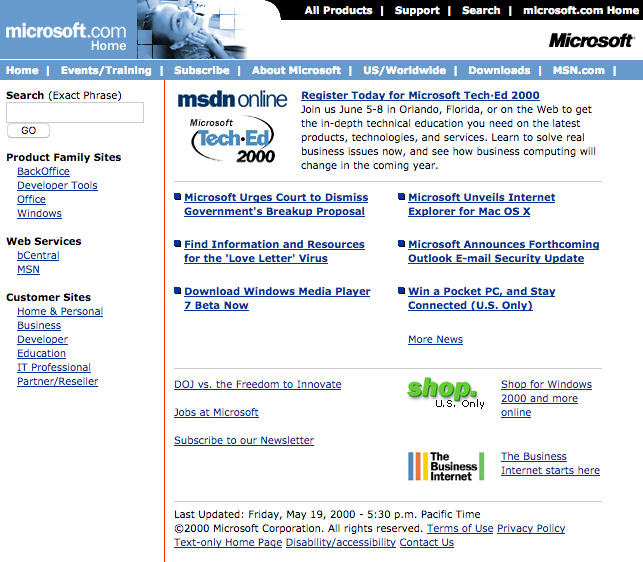
Homepage with commentary on antitrust appeal and Love Letter virus (2000)
Source: web.archive.org
Clippy's Demise Celebrated (2001)
Microsoft wasn't afraid to poke fun at itself from time to time. In 2001, the homepage declared "Clippy's out of a job" to market the launch of the Office XP Suite. Clippy was the much-maligned Office assistant people loved to hate.
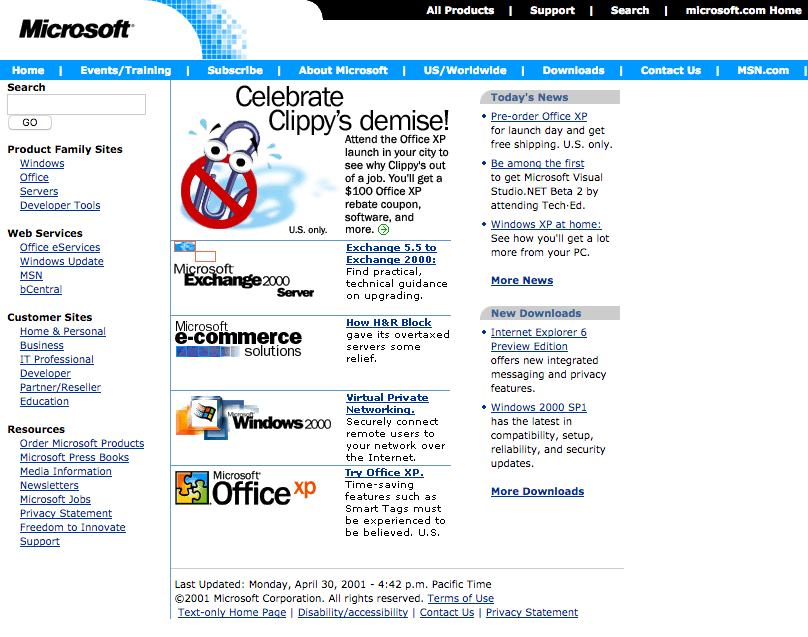
Clippy's demise (2001)
Source: web.archive.org
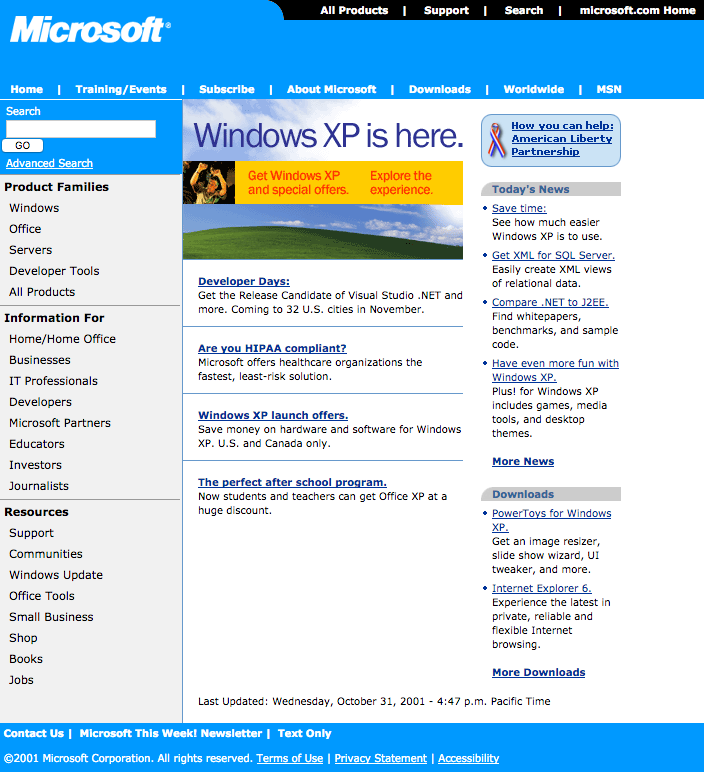
Homepage with Windows XP launch (2001)
Source: web.archive.org
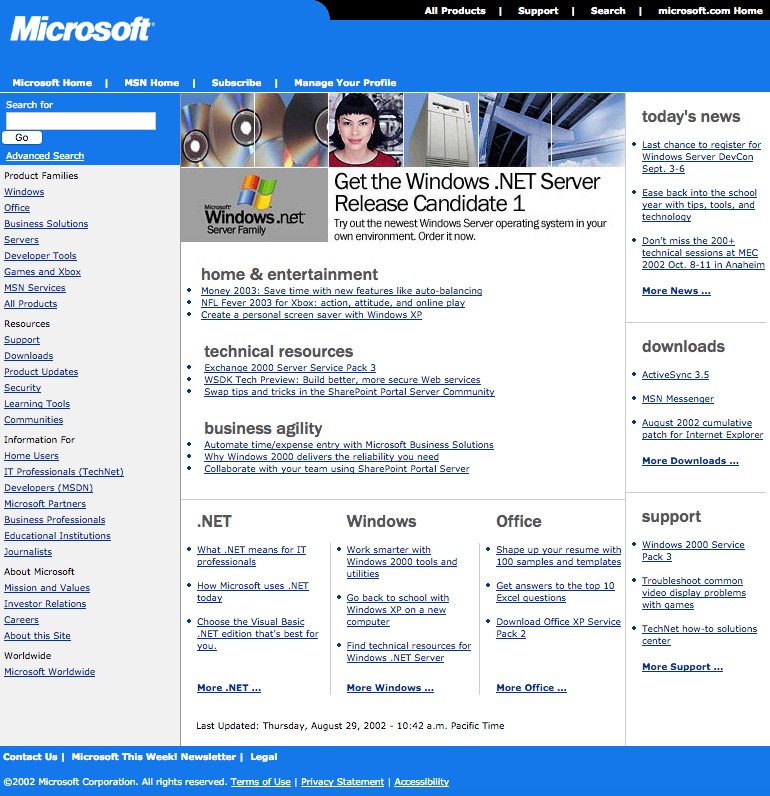
Microsoft homepage (2002)
Source: web.archive.org
Mydoom Virus (2004)
The Mydoom virus was (and still is as of 2019) the fastest spreading email worm ever. Precious Microsoft.com homepage real estate was used to warn users and educate people who were infected.
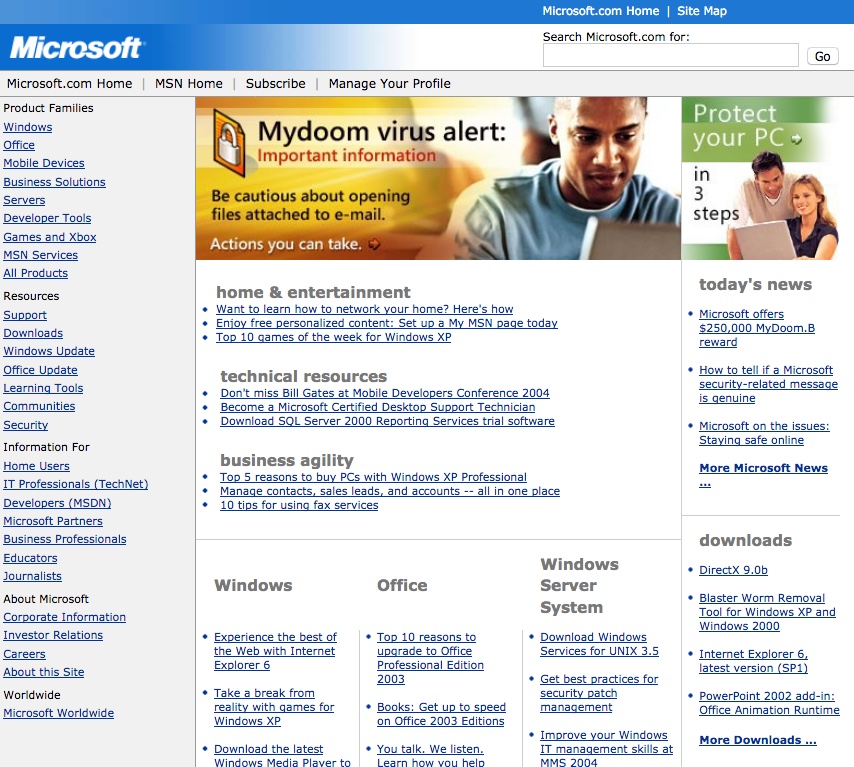
Homepage with MyDoom virus info (2004)
Source: web.archive.org
Homepage as a Storefront (2005)
While Microsoft employed its website to showcase its software from the very beginning, a shift was noticeable in 2005. Exclusive XBox titles such as Jade Empire were prominently displayed, enticing customers to purchase the game. The storefront trend would only gain steam over time.
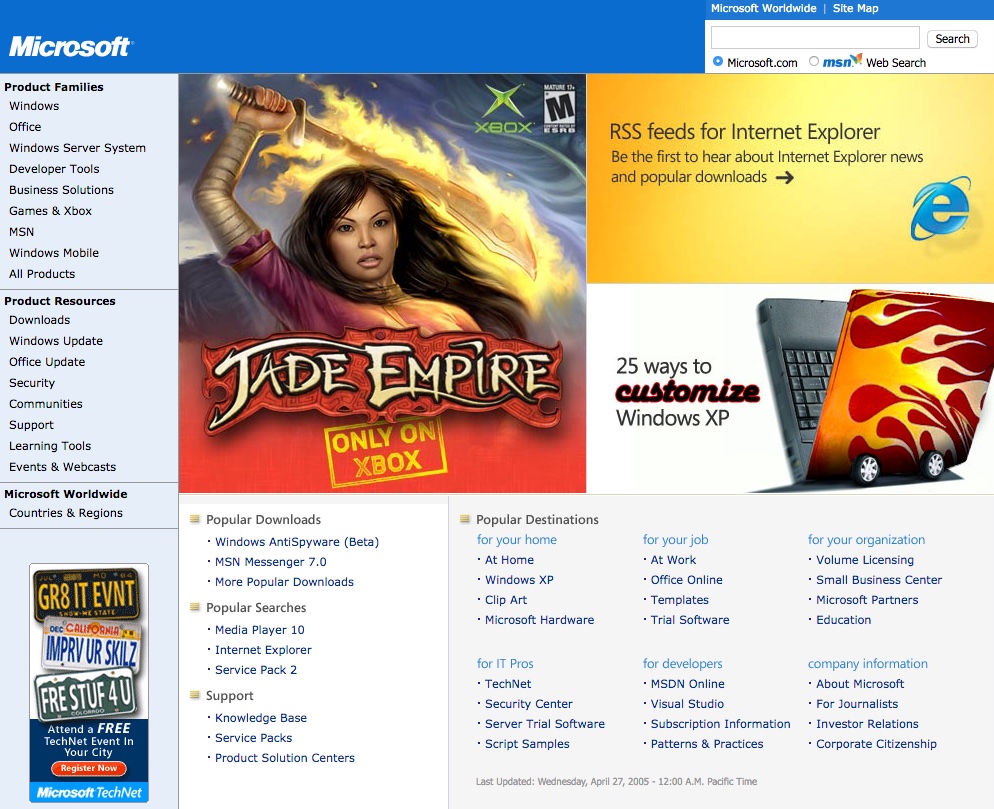
Microsoft homepage (2005)
Source: web.archive.org
Zune Music Player (2007)
The homepage storefront continued in 2007 as Microsoft tried to compete with Apple's iPod brand. The ill-fated Zune line of portable media devices was promoted heavily at the time. XBox 360 was also prominently marketed.
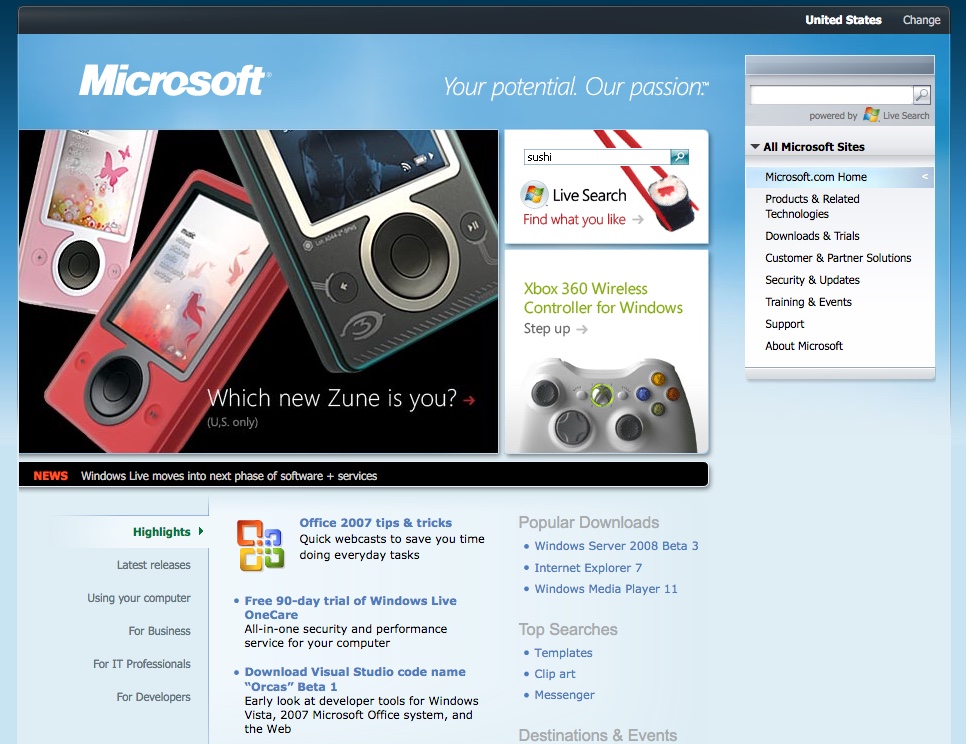
Homepage showing the Zune player (2007)
Source: web.archive.org
Silverlight Embraced (2008)
Silverlight was Microsoft's Adobe Flash competitor. Released in 2007, it was intended to create a more interactive user experience on webpages, similar to Flash which was extremely popular at the time. In 2008, Microsoft.com began encouraging users to install Silverlight with a giant modal popup box on the homepage. Silverlight never achieved critical mass and was later deprecated.
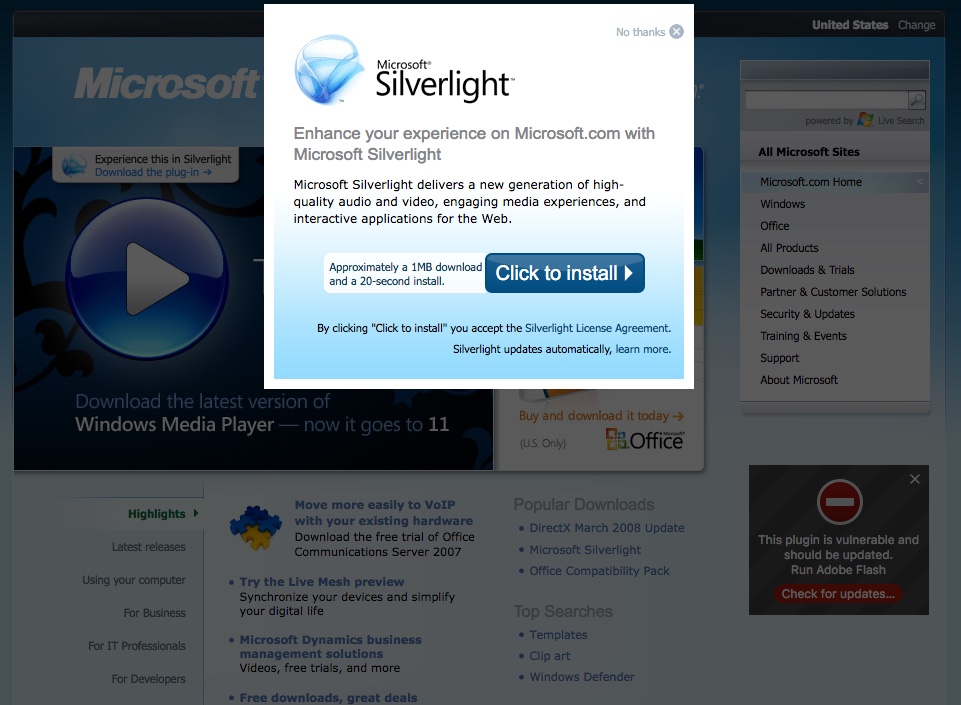
Homepage asking to install MS Silverlight (2008)
Source: web.archive.org
Windows 7 (2009-2011)
Windows 7 was a hot topic on the homepage when it was released in 2009, along with Office 2010 the following year.
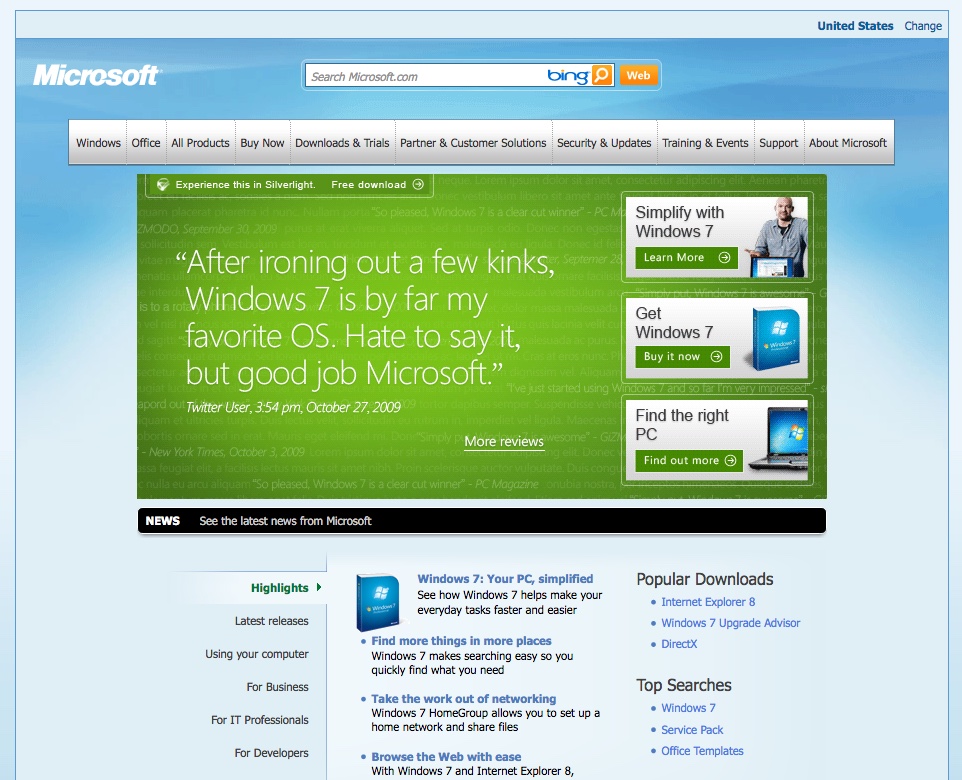
Homepage showing Windows 7 (2009)
Source: web.archive.org
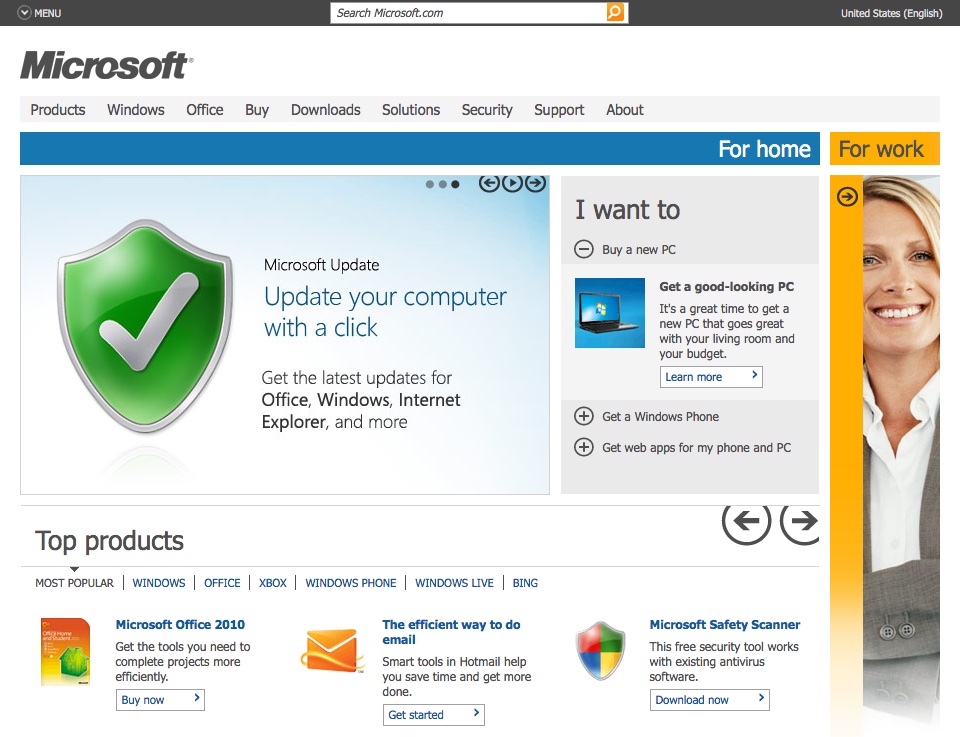
Microsoft.com homepage (2011)
Source: web.archive.org
Responsive homepage (2012)
Microsoft began its foray into responsive web design in 2012. Surface laptops, Windows Phone devices, and XBox consoles were popular homepage dwellers.
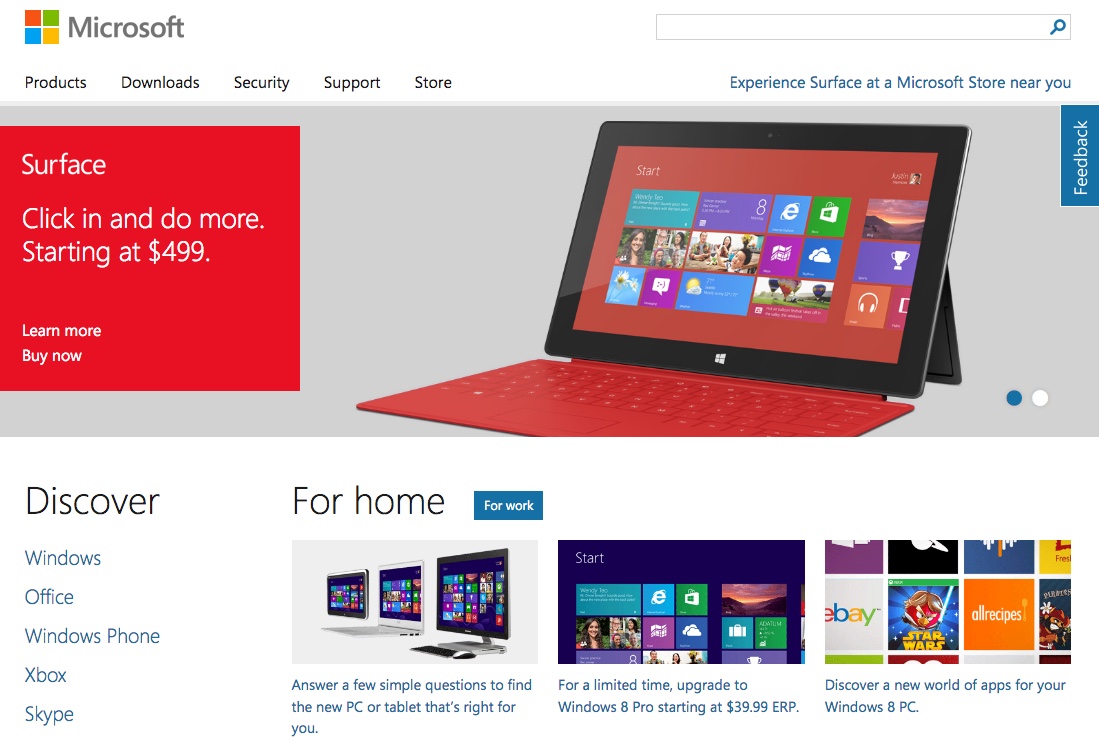
Microsoft's first responsive homepage (2012)
Source: web.archive.org
Internet Explorer Download Page (2013)
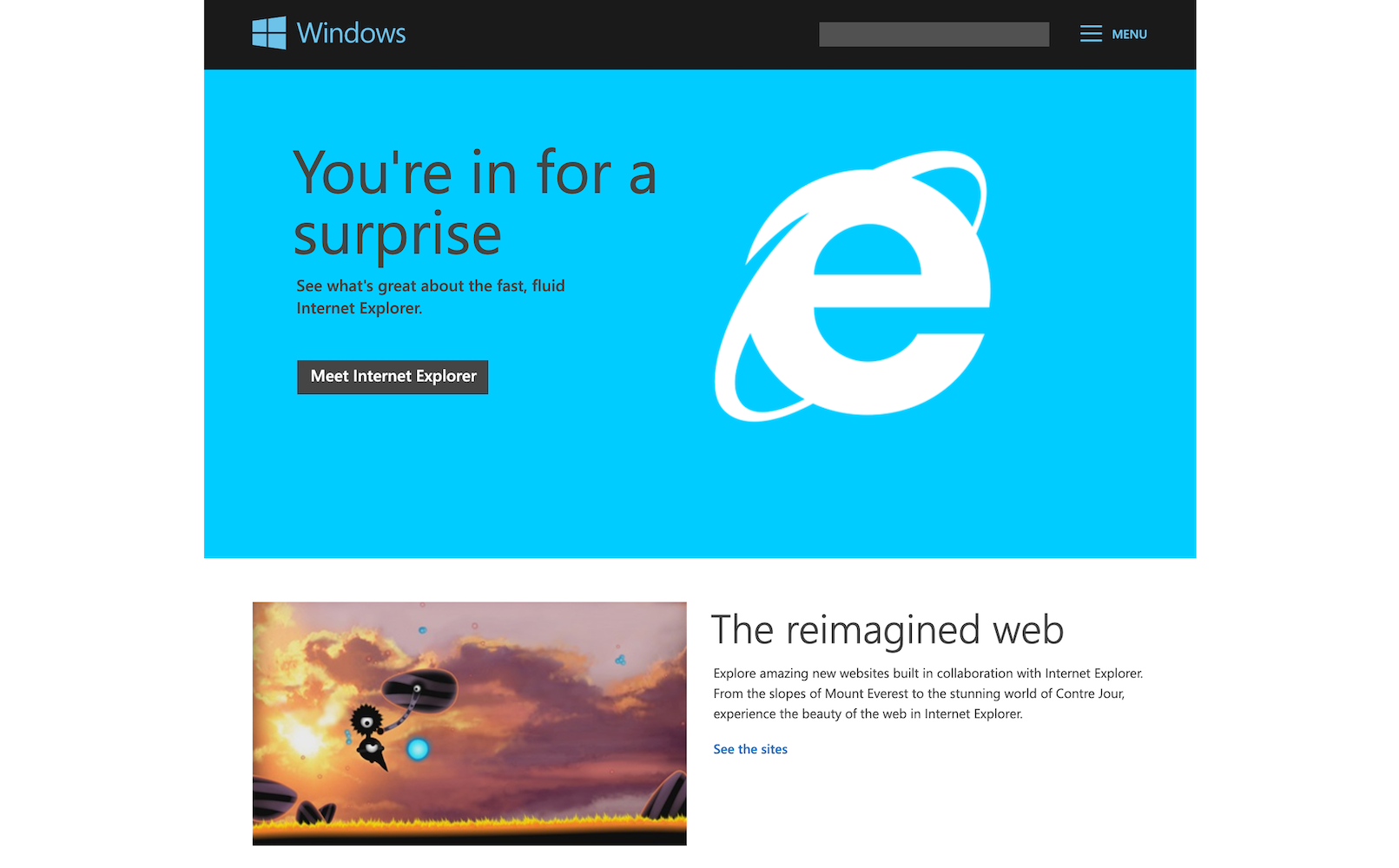
IE Home on Microsoft.com (2013)
Source: web.archive.org
Windows Phone Homepage Promotions (2013-2014)
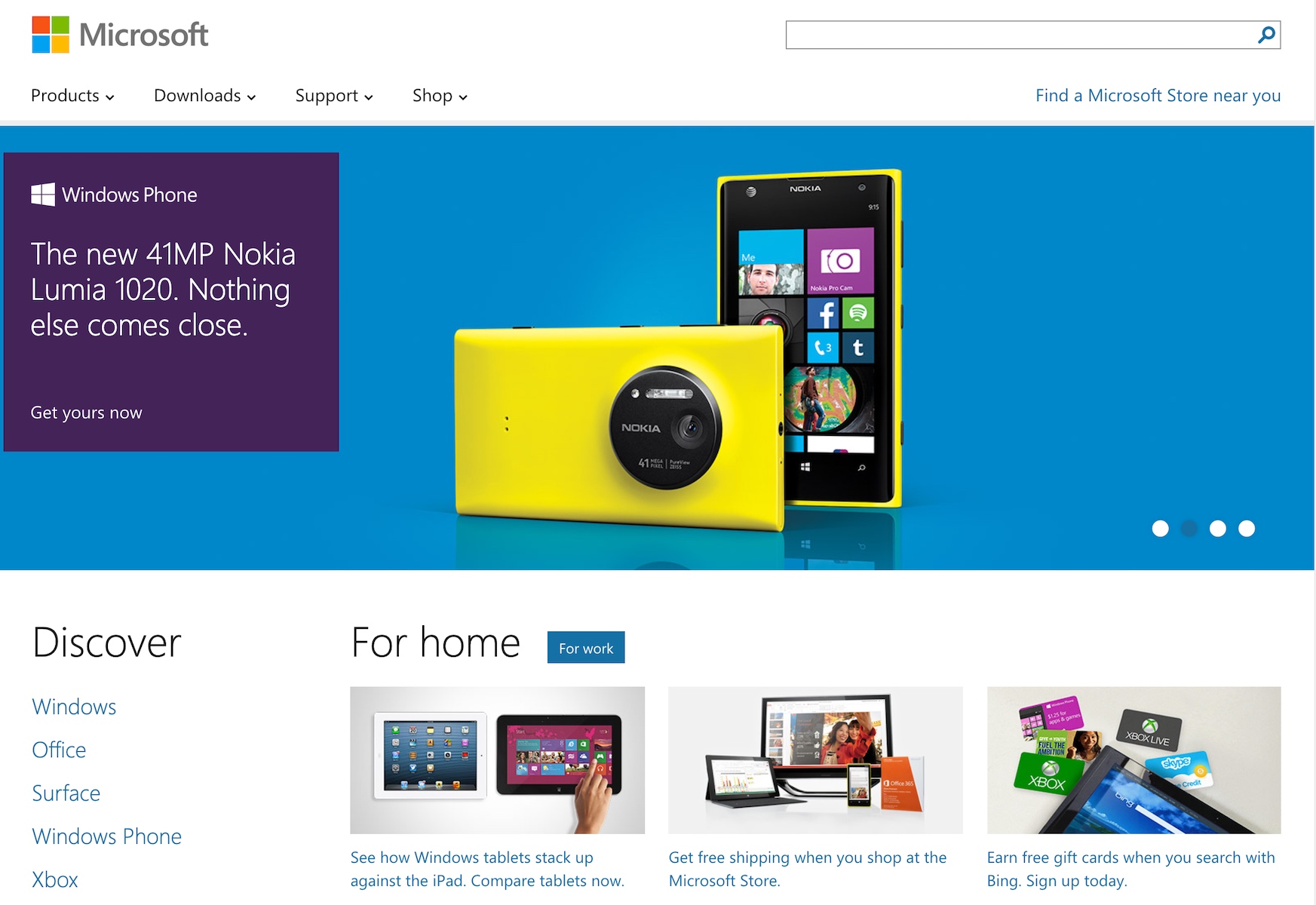
Nokia Windows Phone Homepage Promotion (2013)
Source: web.archive.org
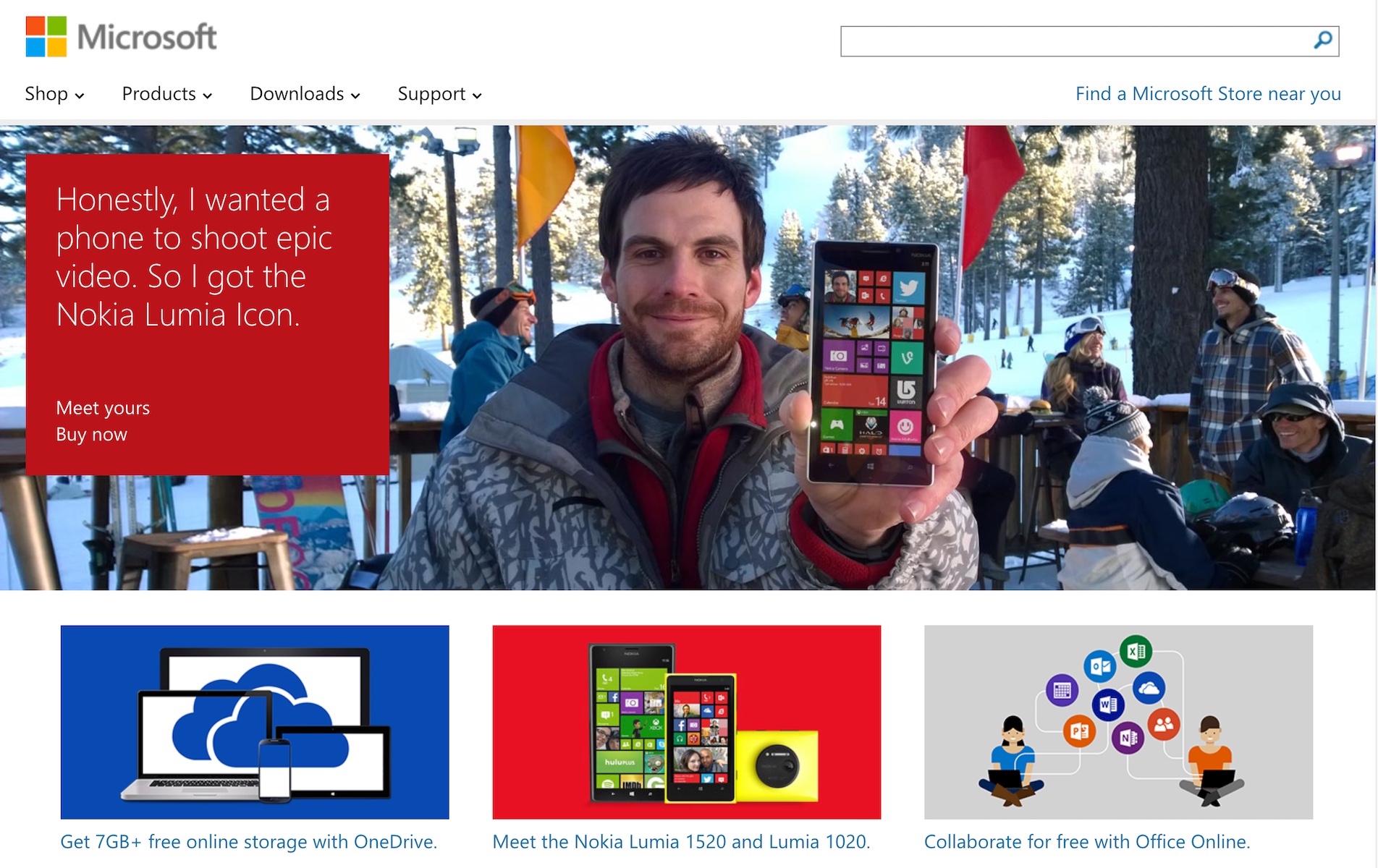
Nokia Lumia Windows Phone Homepage Promotion (2014)
Source: web.archive.org
Microsoft Band Fitness Tracker (2014)
In 2014, Microsoft launched a Fitbit-like wristband device called Microsoft Band to break into the fitness market. The line was unsuccessful and shut down in 2016.
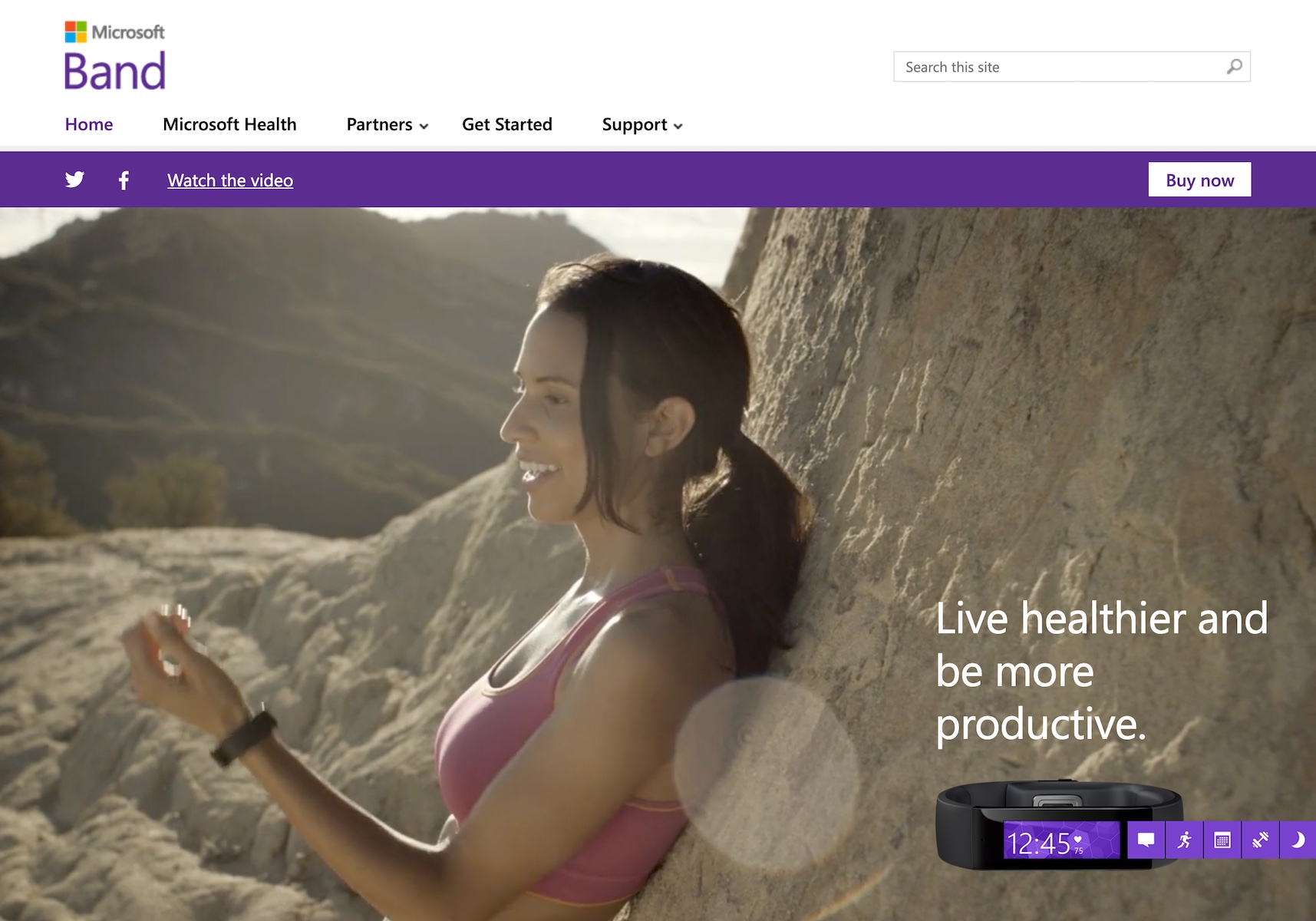
Microsoft Band Health Device (2014)
Source: web.archive.org
Modern Microsoft (2015-2019)
The brisk pace of design change in Microsoft's homepage over the past twenty years finally slowed down in the mid 2010's. Gone are the virus warnings and anti-government messages of past, in favor of crisp, slick product marketing photos.
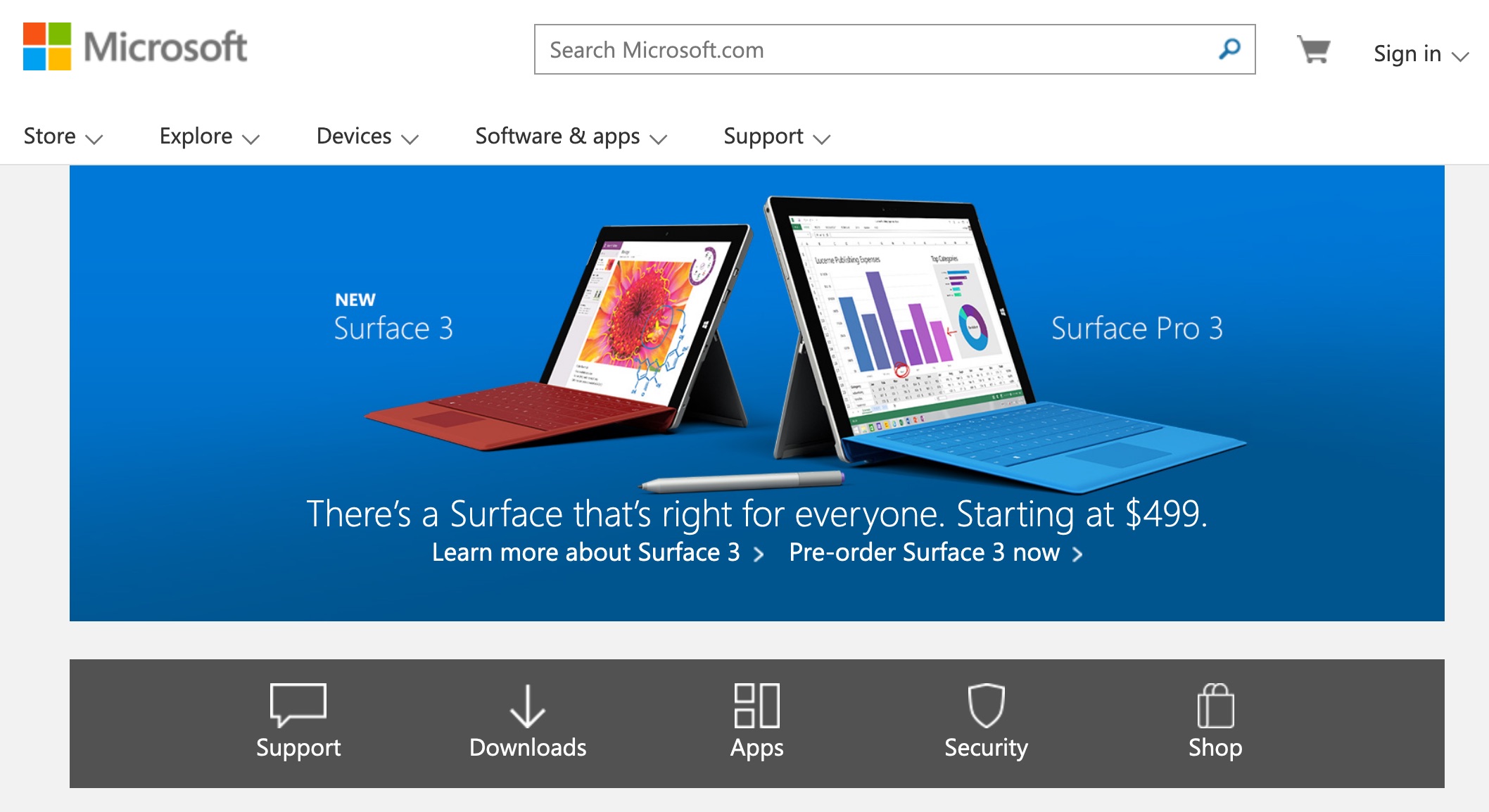
Microsoft.com homepage (2015)
Source: web.archive.org
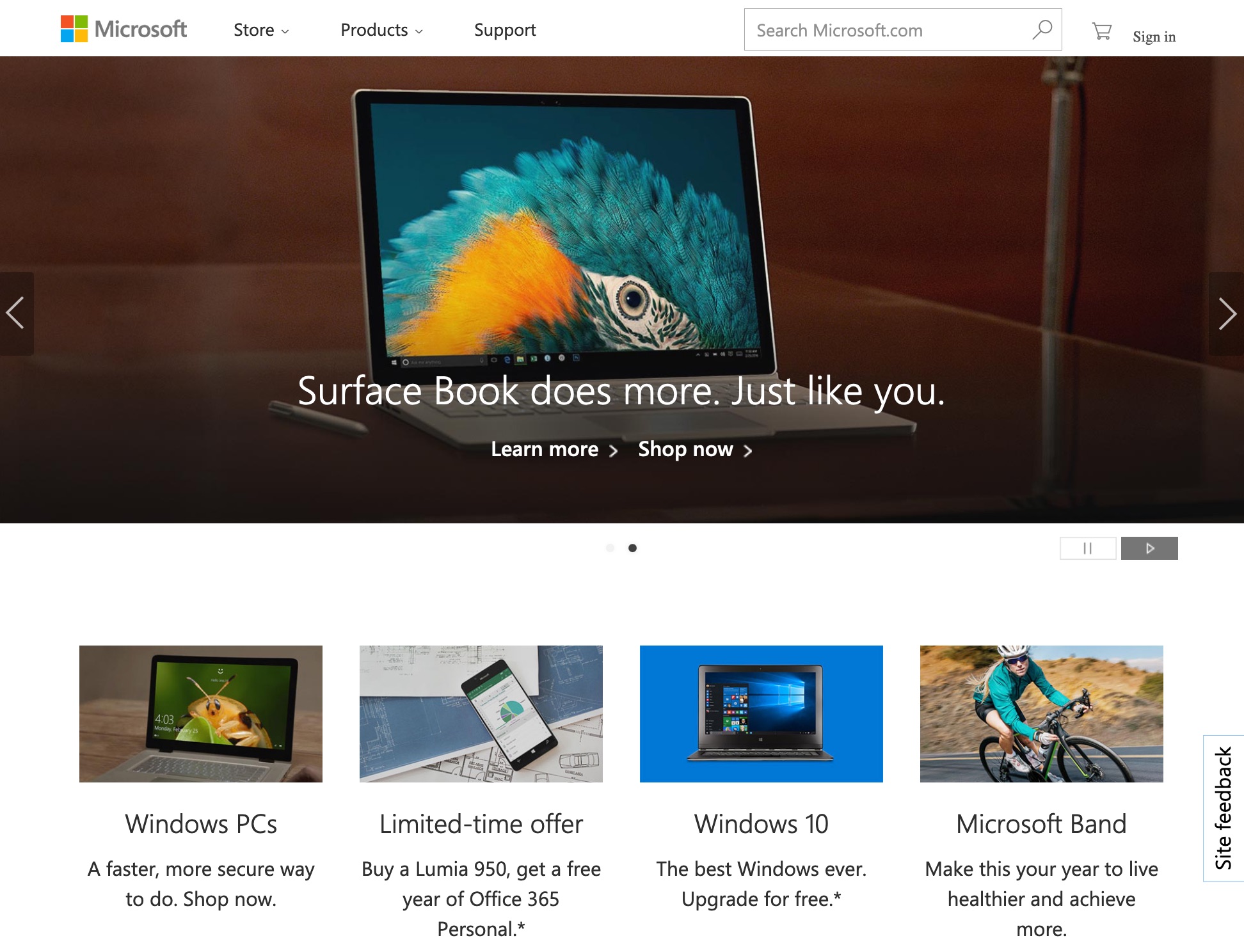
Microsoft.com homepage (2016)
Source: web.archive.org
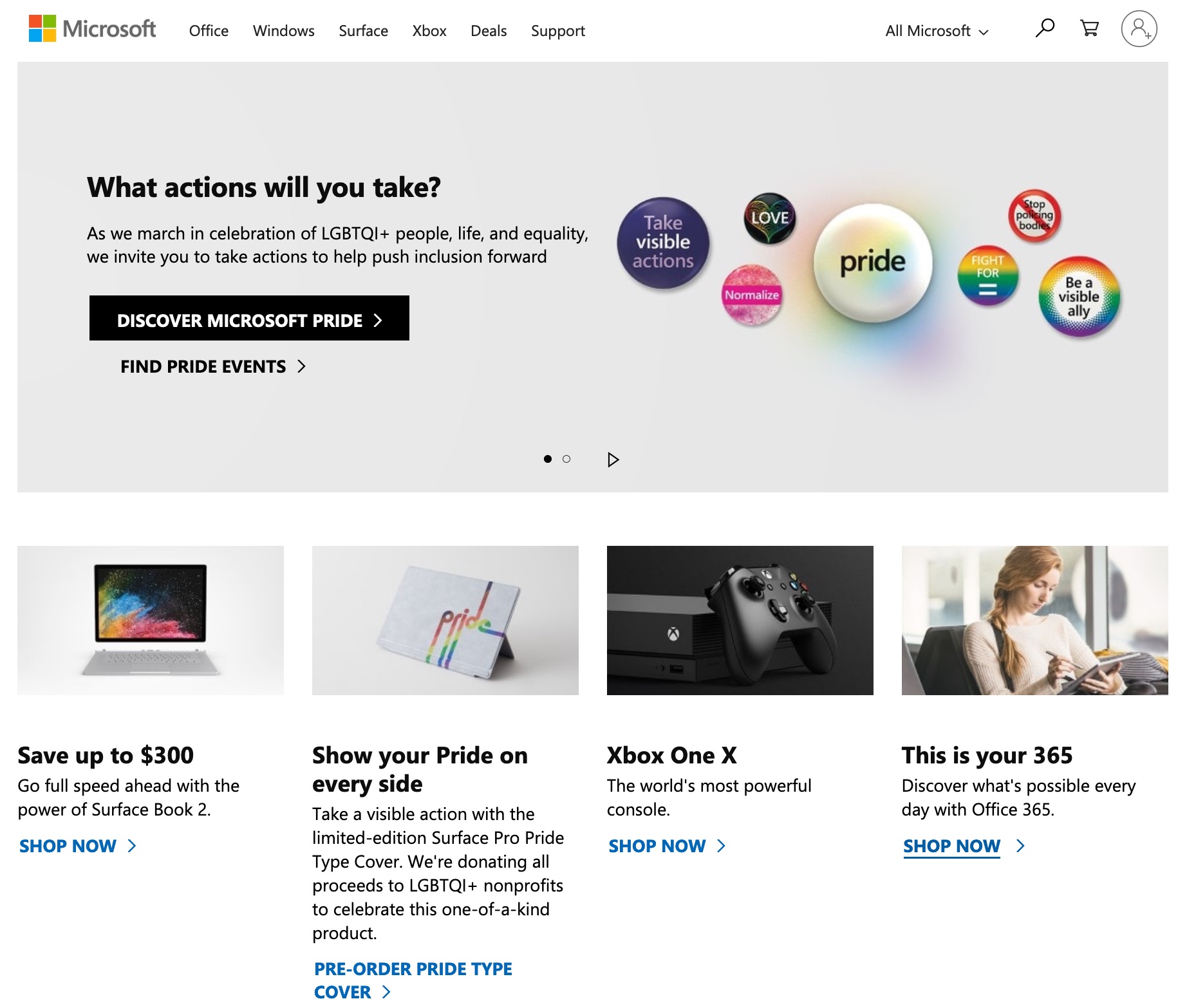
Microsoft.com homepage (2019)
Source: web.archive.org
Next: Microsoft Windows, Word, and Excel
Enjoyed seeing the history of Microsoft.com? See our illustrated
design evolution of Microsoft Windows starting in 1982.
Also, check out our article on the
visual design history of Microsoft Word which launched in 1984.
Finally, if you really like this stuff, why not see what
Microsoft Excel looked like from 1982 to today?
Do you like seeing nostalgic stuff like this everyday?
Follow Version Museum on Twitter or Instagram.
Please help support our museum hosting costs by making a small donation -- buy us a coffee! Thank you so much!

Scroll up to the top.

